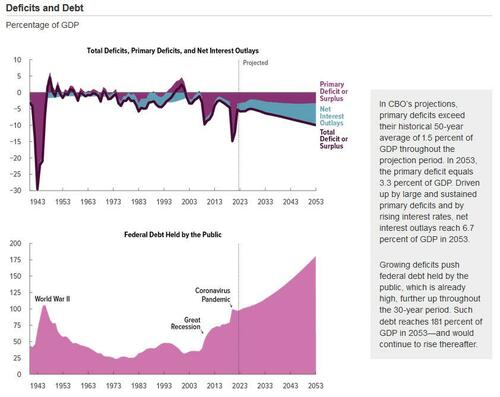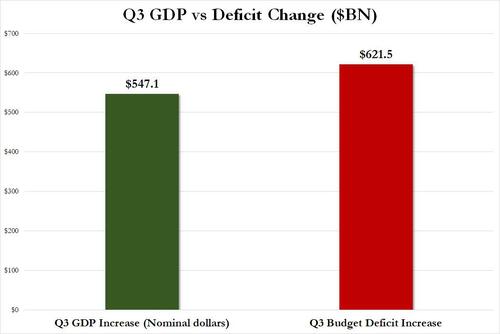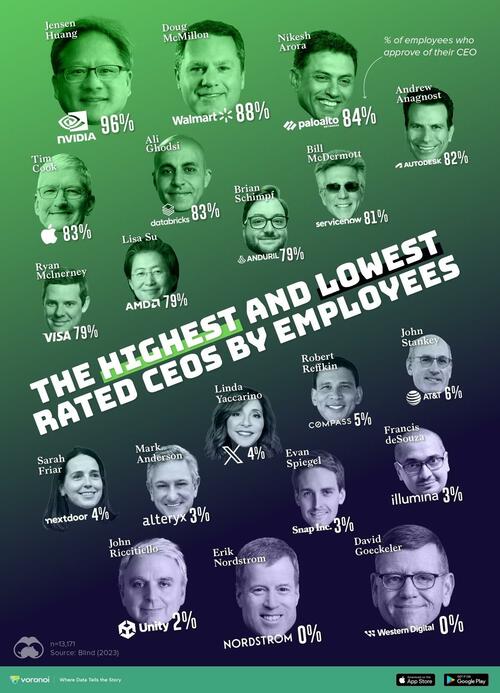Submitted by James Durso, a regular commentator on foreign policy and national security matters. Mr. Durso served in the U.S. Navy for 20 years and has worked in Kuwait, Saudi Arabia, and Iraq.
The Ronald Reagan Presidential Foundation and Institute recently released the results of the 2023 Reagan National Defense Survey.
The survey found that Americans support increased spending for a strong national defense, engagement with the world, and strong support for Israel, Ukraine, and Taiwan.

However, in may key areas, the preferences of young Americans (under 30 years old AKA Gen Z) diverged from those of older Americans, and these differences were highlighted by the Hamas attack on Israel.
Overall, Americans support increased military spending by 77%, but support for an engaged foreign policy is at 42%, down from 51% in 2019. (Americans under 30 want the U.S. to be more engaged and “take the lead” at 29%.) There is consistent, stable support for maintaining bases overseas at 66%, but declining confidence U.S. would win against a nuclear power at 44% (65% in 2018.)
China seen as greatest nation-state threat to U.S. at 51%, up from 21% in 2018, and there is strong majority strong majority support for security assistance (weapons sales) to Israel, Ukraine, and Taiwan at 71%. 51% would encourage a family member to join the military, falling to 44% for the under 30s.
The military remains America’s most trusted institution in that 46% express a “great deal of confidence,” but that falls to 30% for those under 30. The survey points out that is down from 70% in 2018 and has been holding steady in the high 40s for the last three years, that is, “under water.”
Perhaps reflecting this, “about one-in-ten Americans under the age of 30 are extremely or very willing to serve in the U.S. military.” This aligns with the Pentagon’s surveys that found, among youth aged 16 to 21, about 10% are interested in military service.
The Pentagon found the top reasons for lack of interest in enlisting are “Possibility of physical injury/death” and “Possibility of PTSD or other emotional/psychological issues.”
These have been issues in every war ever, but young Americans may be sensitive to them now because the wars in Iraq and Afghanistan were failures, and the attention given to “wounded warrior” organizations that highlight the life-changing injuries suffered by fighting men and women, which may discourage enlistments.
Is it worth losing your legs just to get the GI Bill especially when there is a lot of scholarship money out there?
And half of those polled would encourage a friend/family member to join the military 51%, falling to 44% for those under 30.
Youth indifference to military service may present the Pentagon with a future dilemma: If it gets all the money it wants for ships, aircraft, and armored vehicles, who will maintain and operate them?
And it’s not a hypothetical that may happen tomorrow.
Over the course of 2023, the Navy reduced the crew size of the newest aircraft carrier, the USS Gerald R. Ford (CVN-78), by 500 to 600 sailors who have not been replaced, even though the ship is currently deplored to the Mediterranean and close to the action in Gaza.
Taken to an extreme, a shortage of people may affect the country’s military options and, in a crisis, the Pentagon may advise the president to adopt a high-risk strategy early as the country cannot afford an extended conflict unless it institutes conscription, which is unlikely unless the Congress declares war.
Letter to America
In November 2023, TikTokers discovered Osama bin Laden’s “Letter to America” which was al-Qaeda’s justification for attacking America on 11 September 2001.
A video about the letter was apparently first shared on TikTok and it got about 800,000 views and over 80,000 likes. Some other TikTokers also posted about the letter with similar results. Soon the hashtag #lettertoamerica was born, but it only took off when journalist Yashar Ali tweeted about it and it soon secured 14 million views, though some were critical of the posting.
Among the reactions to the letter were, “everything we learned about the Middle East, 9/11, and ‘terrorism’ was a lie,” “I will never look at life the same. I will never look at this country the same,” “Osama bin Laden’s letter is not as crazy and threatening as I expected, is well written, and makes some objectively true points,” and “Osama bin Laden was good. Even better than us.”
After young Americans on TikTok expressed sympathy for Osama bin Laden, the White House had to remind everyone that Osama bin Laden was a bad, bad man.
How could young Americans ever think “maybe this bin Laden guy has something to say!” after he murdered almost 3,000 of their countrymen? Why not trust government figures or establishment journalism on what bin Laden was?
Well, because the establishment hasn’t given them any reason to be trusted. The government and its media acolytes promoted the 2003 invasion of on Iraq which was based on lies: that Iraq possessed weapons of mass destruction, and that Iraqi leader Saddam Hussein was cooperating with bin Laden’s al-Qaeda terrorist group.
Then there’s Afghanistan. According to the Afghanistan Papers exposé senior American officials knew the U.S.-led NATO campaign was failing, but they kept it going for almost 20 years until the Taliban victoriously entered Kabul on 15 August 2021.
In 2011, the U.S. led the attack on Libya and destroyed the functioning government that was cooperating with Washington, and kicked off a migrant wave that upended politics in Europe. U.S. troops are still in Syria because mumble-mumble terrorism, though the Islamic State was defeated in 2018. Then it was All Aboard! to fight the Russians in Ukraine, but then the U.S. political class and media dropped Ukraine when Israel was attacked by Hamas.
Young Americans are likely realizing that their country is led by unserious people who lie to them as a matter of course.
Hamas and Israel
After the Hamas attack on Israel on 7 October, a Quinnipiac University poll found that American voters sympathizing with the Palestinians increased from 13 percent to 24 percent.
According to Quinnipiac, “The shift is largely driven by respondents under 35 years old, who overwhelmingly said they disapprove of Israel’s response to the Oct. 7 Hamas attack (66 percent), have greater sympathy for Palestinians in the conflict than Israelis (52 percent) and believe the U.S. is too supportive of Israel (50 percent).”
According to a CNN poll, when asked whether Israel’s response to the Hamas attack was fully justified, only 27 percent of Americans aged 18-34 agreed, as opposed to 81 percent of Americans over age 65.
A recent Harvard/Harris poll found most Americans believe Israel “is trying to avoid civilian casualties” but also “the vast majority of young American adults believe Jews are oppressors, that the 10/7 attack is justified by Jews’ prior actions.” The poll also found 78% of Americans aged 18-34 believe Israel has a right to exist.
A December Quinnipiac University poll found “voters 18 – 34 years old (72 – 21 percent) and voters 35 – 49 years old (53 – 38 percent) oppose [sending more military aid to Israel],” though all voters polled were more evenly split with 45 percent supporting and 46 percent opposing military aid.
And a new Economist/YouGov survey found that 1 in 5 Americans between the ages of 18 and 29 believe the Holocaust is a “myth.” The results led to a lot of excited commentary and a suggestion that the feds provide funding for Holocaust education.
A more likely explanation, according to Ilya Somin, is young Americans’ ignorance of history, and “ambiguities in the survey question.” Somin says, “…most surveys of political and historical knowledge find that it is inversely correlated with age; that is, younger people tend to know less than older ones.”
Also, Israel can no longer “control to a significant degree the flow of information and the moral framing of its wars” due to what is known as “networked tribalism” which “bypasses traditional media by directly delivering information and moral framing to people using social networks” and has emerged to wage moral warfare in opposition to Israel.
An example is the 31 billion #freepalestine posts on TikTok, or the mobile phone-ready video of Hamas fighters on the Telegram app, in contrast to the official spokesman if the Israeli Defense Forces standing at a podium briefing reports from legacy media.
The poll results may also be colored by the tendency for youth to reflexively oppose anything their elders insist on, but many of them sincerely support the Palestinians. After all, Israel has nuclear weapons, the most modern military in the region, and carte blanche from Washington so, many students will ask, who is the real underdog here?
The Brookings Institution recently reported, “Even before the Hamas invasion, there were distinct generational differences in Americans’ attitudes towards Israel,” and, “…only 41% of those aged 18-29 had a favorable view of Israel, compared to 69% of those aged 65 or older,” so U.S. Middle East policy may change as they ascend to positions of power, which should be an incentive to Israel to make an equitable deal with the Palestinians before its patron starts leaning in the other direction.
Another metric on youth sentiment may be seen on TikTok where #freepalestine has 31 billion posts compared to 590 million for #standwithisrael, which lead The New Arab to claim, “Palestinian solidarity won the internet.” The U.S. has the most TikTok users – 116.5 million – so the overall number may reflect young Americans’ thinking.
The Causes
The Reagan Foundation says many Americans favor a forward-leaning national security posture, but young Americans appear less interested in that idea.
The military, key to those visions of “American leadership,” is not an attractive option when the U.S. Chamber of Commerce is reporting a labor shortage, and UPS drivers recently secured a $170,000 in pay and benefits package. And why risk life and limb for college tuition money when much scholarship money goes begging? In fact, UPS will pay your college tuition and you won’t have to get shot at to earn it.
The Hamas attack on Israel has created a febrile atmosphere where you are with Israel or you are a Hamas apologist. Young Americans may be less seized with Jerusalem’s problems due to their immediate economic concerns and a lack of confidence in the country’s leaders who lied about Iraq and Afghanistan with no consequences.
But it’s not just the liars in Washington, D.C. who made a hash of things. Parents and teachers must shoulder some of the blame for the lack of critical thinking skills in many young Americans.
American students have been in the care of “anti-imperialist” educators with less interest in civic education than in the “anti-racist” 1619 Project and “decolonizing the curriculum” instead of teaching the three Rs.
The result: American students are falling behind the rest of the world and their test scores lag the global average. It is no surprise that a bad education would combine with a lack of trust in institutions to make some young Americans interested in reading with interest the words of Osama bin laden – the greatest mass murderer in American history.
And knowing they were lied to may explain the failure of the military to attract enough qualified recruits, which is part of a long-term trend of “historically low faith in U.S. institutions” reported by Gallup. Who wants to be the cannon fodder in the next war fought for nebulous “American interests” when you can be sure no one named Bush or Obama will be in that foxhole with you?
Gen Z members suffer from high levels of depression and anxiety and are most likely to report their mental health as being poor. Young Americans are waiting longer to get married, and women aged 25 to 34 are increasingly likely to die in the late 20s to early 30s than at any time since the 1940s. They believe the world is more dangerous than at any point in modern history. Poor mental health, a bad education, a lack of trust in institutions, and the sense their economic prospects are limited and the American Dream is out of reach, are what’s needed to create a population that will withdraw from civic life, further weakening the country.
In other words, the kids aren’t alright, and the country’s leaders must decide how to put them right if they want to rebuild trust.
You could blame a lack of civic education in America, but young Americans are rightly dubious when they see retired military officers on TV demanding the U.S. be all-in defending a wealthy country with the most advanced military in the Middle East, if for no other reason that it disqualifies Washington as a future mediator of a Middle East peace agreement, and will probably isolate the U.S. and make it unable to summon a coalition when one is needed to defend U.S. interests.
With the attack on Gaza is still in process, Israeli defense minister Yoav Gallant is promoting what may turn into another overseas (mis)adventure for the U.S. (and France) – peacekeeping duty separating the Israelis and the Iran-backed Hezbollah militia in Lebanon. The usual cable TV “military analysts” will probably be all for this, claiming America’s “credibility” is at stake, but forgetting what happened the last time U.S. and French troops were in close proximity to a Lebanese militia sponsored by Iran.
The Challenging Way Ahead
So, how can the U.S. political class build trust with young Americans?
It will take longer than one election cycle, and will tax Washington’s discipline as it will have to execute consistently over the long term, and display the focus and application usually only found in modernizing authoritarian governments. But the priority should be to put the country’s financial house in order which benefits all Americans young and old.
America is about $34 Trillion in debt, over $100,000 per citizen; its bond rating was recently cut to AA+; borrowing costs are climbing and debt service will soon be bigger than the Defense Department budget by 2024, and interest payments on the debt are currently on “track to nearly double between 2020 and 2023 and projected to double again by 2032,” the Committee for a Responsible Federal Budget notes, partly because the U.S. government now has to roll over money it borrowed for cheap at much higher rates.
Washington should be less casual about committing troops abroad, because isn’t 750 bases in 80 countries enough?
And Congress must insist on carrying out its constitutional responsibility to declare war, rather than proffering an Authorization for Use of Military Force fig leaf, which relieves it of responsibility but allows the president to set the terms and duration of a conflict.
America should reconsider what it means to be “engaged” – warfare and sanctions, or trade and diplomacy – because the military’s recruiting woes and the latest tension in the Middle East will pass, because young Americans may have a different vision and, pretty soon, they’re going to be in charge.
James Durso (@james_durso) is a regular commentator on foreign policy and national security matters. Mr. Durso served in the U.S. Navy for 20 years and has worked in Kuwait, Saudi Arabia, and Iraq.
















